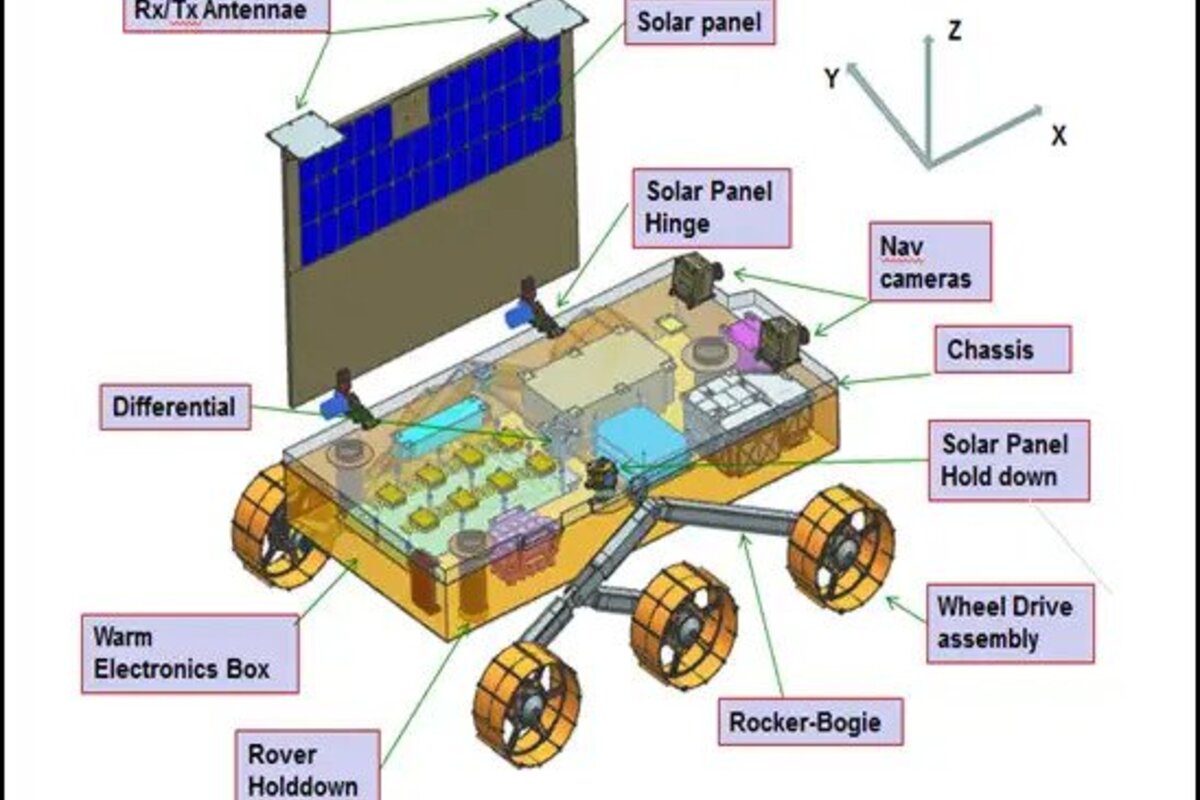Chandrayan 3 mission’s Pragyan Rover is currently perched on the ramp of the Vikram Lander, which has now successfully touched down on the lunar surface. The rover will travel around the Moon’s surface in the mission’s upcoming phases to acquire essential data on its atmosphere.
The lifespan of the Vikram Lander and Pragyan Rover is one lunar day, or 14 days on Earth.
Advertisement
While the lander will keep exploring the lunar environment, including its temperature features and seismic activity among other goals, the Pragyan rover wandering the surface will be doing a little more than just gathering data.
The name “Pragyan,” a six-wheeled robotic vehicle, is Sanskrit for “wisdom.” The rover, which weighs 26 kg, is equipped with payloads that can collect information about the Moon’s surface and analyze the elements that make up the atmosphere.
The APXS, or “Alpha Particle X-Ray Spectrometer,” and the LIBS, or “Laser Induced Breakdown Spectroscope,” are its two payloads.
While LIBS will conduct tests to ascertain the elemental composition of chemical elements like magnesium and aluminum, etc. in lunar soil and rocks near the lunar landing site, APXS will be involved in determining the elemental composition of the lunar surface.
But in addition to its scientific goals, the rover also has a symbolic role. In addition to gathering data, the rover’s rear wheels will mark the lunar surface with imprints of the ISRO and the national anthem, which features the Lion Capital of Ashoka at Sarnath. This will serve as a symbol of the rover’s presence and leave India’s mark.
India made history on Wednesday by becoming the first country to reach the lunar south pole with the landing of Chandrayaan 3. Nearly four years have passed since Chandrayaan 2’s disastrous failure to accomplish a soft landing on the moon in September 2019.
The spacecraft, which was launched with the goal of “developing and demonstrating new technologies required for interplanetary missions,” was equipped with an indigenous propulsion module, lander module, and rover.











